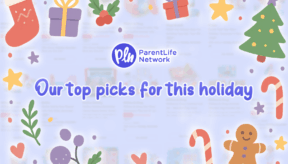Looking for a smart way to save for your child’s post-secondary education?
There’s a lot of information out there, but we’ve cut through some of the confusion to put together this quick guide to an excellent way to save in a: Registered Education Savings Plan (RESP).
An RESP has a lot of benefits—like government grants and tax-sheltered growth—that work together to help maximize your savings for your child’s post-secondary education. Income earned on grants and contributions may continue to grow thanks to compounding. Compounding is one of the benefits of investing. Ideally, once your investment starts to earn income, and you re-invest that income, over time your earnings should also generate earnings.
The effects of compounding become more pronounced the longer you’re invested, since the earnings on your investment income could snowball over time.
Let’s walk through an RESP from start to finish to see how it works.
Opening an RESP
The first step to opening an RESP is getting your child a Social Insurance Number. You’ll need it to register. You can get one online by filling in this form.
Next, you’ll want to choose an RESP provider. Most financial institutions, like banks and credit unions, offer RESPs as part of their overall services. Some providers, like CST Spark, focus exclusively on RESPs. With a 100% digital offering, CST Spark has streamlined the process to be smart, simple and flexible to help you make your child’s dreams become a reality. You can open an RESP in just a few minutes, from the comfort of your home.
There are three different kinds of RESPs: individual, group, and family. Which type you choose depends on who you’re saving for and how you’d like to invest your money. Individual plans and group plans are popular if you’re saving for one child, but a family plan could be right for you, too.
Regardless of which plan you choose, an RESP gives your child the freedom to choose the post-secondary education that’s right for them, including university, college, international academies and more.
Watching your RESP grow
Once your RESP is open, it’s time to start adding in some money.
Some plans have minimum contribution requirements, but some like the CST Spark RESP have very flexible contribution schedules and can be opened with as little as $10/month or a single payment of $500.. How much and how often you add to the plan is up to you. Whatever your needs, there’s a plan for you. Maximum lifetime contribution limit is $50,000 per child.
With any plan, there’s no need to worry about taxes. Your money grows tax-free while it’s invested in your RESP.
The federal government helps you grow your plan through the Canada Education Savings Grant (CESG) which matches 20% of your annual contributions, up to $500 a year and a maximum of $7,200 over the life of the plan per child.
There are also additional grants beyond the CESG, so check if you’re eligible for a provincial grant or the Canada Learning Bond. And don’t forget, the income earned on these grants compounds over time to help your plan grow.
Withdrawing from an RESP
So, you’ve maximized your contributions, received all of your government grants, and watched your investments grow. What happens when your child finishes high school?
First of all, there’s no rush. They don’t need to make a decision on their future right away. RESPs can stay open for up to 36 years!
Once they head to post-secondary, you’ll be able to start withdrawing money from the RESP to help them with important stuff like tuition, books, food, and more. The income paid to your child is taxable in their hands and since students have little or no income, little or no taxes are payable.
What happens if your child decides not to enrol in post-secondary? Depending on the plan, you may have the option to transfer the RESP to a sibling or another child. Or you may be eligible to transfer the income earned in the plan to an RRSP if you have room Or, you could simply close the RESP and withdraw the earnings in the plan, in this case, taxes will be applied. Government grants will be returned to the government if the plan is not used for post-secondary education.
Not so complicated after all, is it? Now that you’re familiar with how an RESP works, we invite you to take a look at CST Spark and see if the flexibility and personalized approach of CST Bright PlanTM could be right for you.
DISCLAIMER:This is a sponsored post in partnership with CST Spark. All opinions and commentary are PLN’s and should not be construed as investment advice. C.S.T. Spark Inc. is the exclusive distributor of CST Bright Plan which is only sold by prospectus.
*Opinions expressed are those of the author, and not necessarily those of Parent Life Network or their partners.

 Sponsored
Sponsored





